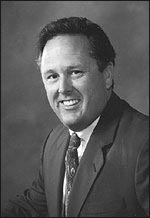March 10, 2014 Russ Wertz, Founder CEO, Wertz & Company, LLP Homeowner Tips
The approval of the audited financial statements of your homeowners’ association (HOA) may be intimidating to you as a  member of the Board of Directors, especially if you do not have a financial background that trained you in this area. However, if you keep in mind the purpose of the audit, key risk areas for an Association, and the particular areas in the financial statements on which you will focus, you should feel more comfortable while fulfilling this part of your fiduciary responsibility.
member of the Board of Directors, especially if you do not have a financial background that trained you in this area. However, if you keep in mind the purpose of the audit, key risk areas for an Association, and the particular areas in the financial statements on which you will focus, you should feel more comfortable while fulfilling this part of your fiduciary responsibility.
What Is The Purpose of an Audit?
The purpose of an audit is to give the readers of the financial statements assurances that the figures reflected on the statements present the overall financial picture of the Association, be it good or bad. Only Certified Public Accountants (CPAs) can perform this function and they follow strict guidelines when doing so. An audit DOES NOT check or confirm every figure reflected on the financial statements. The time and cost to do this would not be beneficial. What an audit opinion will provide is a level of comfort that there is nothing materially wrong or misstated within these documents.
Key Risk Areas for an HOA
You, as a board member, should ask yourself the following questions while reviewing the audited financial statements. The answers will bring to light any risks affecting the Association.
Key Financial Statement Components
A set of audited financial statements includes four key components: a report, the financial statements themselves, notes, and supplementary material. Resist the urge to flip right to the pages with numbers. That is, do not skip the report. From an auditor’s viewpoint this is the essence of the whole package. Read the report and digest what it says. The opinion paragraph provides the results of the audit. A clean audit is indicated when the auditor believes the financial statements are presented in accordance with accepted accounting principles.
The numbers in the financial statements themselves should be of no real surprise to you. The Board should be reviewing financial information throughout the year. If the auditor made changes during the audit, those changes would have been discussed with the property management company. In the simplest terms the financial statements present what the HOA’s assets and liabilities are (the balance sheet) and what it has earned and spent (the statement of revenues and expenses). There is not a need to spend a lot of time reviewing these numbers provided that this has been done throughout the year with the property manager and given that the auditor made no or few changes.
The notes and supplementary material to the financial statements are an integral part of the entire financial statement package. The intention of this information is to “paint the full picture” by further clarifying certain figures contained within the financial statements. There will be explanations of certain items as well as descriptions about issues that go beyond numerical presentations, such as whether the Association’s bank accounts exceed FIDC insured levels, details about debt, and commitments that the Association has taken on. A summary of the reserve study will be included in the supplementary material.
Hopefully this summary has provided you with some common sense guidance in this area.
 About the author:
About the author:
“It never ceases to excite us—working alongside entrepreneurs and business owners who are full of passion and looking for guidance and assistance. It is a great privilege to contribute to their long-term success and share in their celebratory milestones along the way.” Russ has been the driving force behind our firm’s success for many years. He never tires of discovering new ways to add value to the business, and he greatly enjoys his role working directly with entrepreneurs, business owners and employees to help them solve problems and reach the level of success they envision.